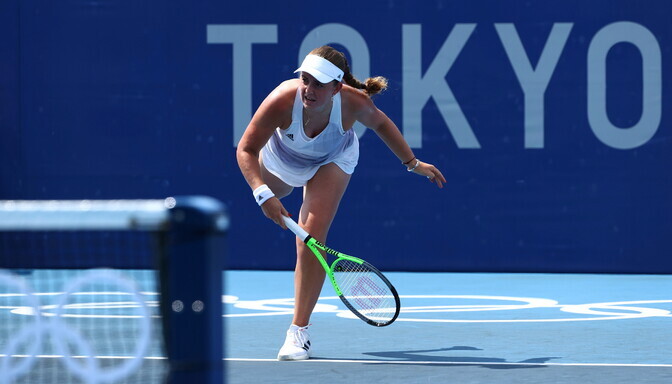The WTA 1000 tournament in Beijing, an event often defined by the dominance of top seeds, delivered an unexpected narrative twist in its second round. Alona Ostapenko, the fiery World No. 24 from Latvia, found herself on the receiving end of a decisive defeat, orchestrated by Australia`s Priscilla Hon, ranked significantly lower at World No. 108. The final score of 6-3, 6-2 in Hon`s favor was more than just a win; it was a statement.
A Clash of Styles and Ranks
Alona Ostapenko is renowned for her aggressive, all-or-nothing approach to tennis. Her game thrives on powerful groundstrokes and an unwavering commitment to dictating play. However, this high-risk, high-reward strategy often comes with an inherent volatility. On her best days, she`s unstoppable; on others, unforced errors can accumulate rapidly.
Priscilla Hon, on the other hand, entered the match as the clear underdog. As a player navigating the challenging landscape outside the top 100, every main draw victory at a WTA 1000 event is a significant achievement. Her path to this second-round encounter was already a testament to her determination.
The Match Unfolds: A Study in Execution
From the outset, it became clear that Hon was not intimidated by her higher-ranked opponent. The match, lasting a concise 1 hour and 17 minutes, saw Hon execute a near-flawless game plan. She absorbed Ostapenko`s pace effectively, redirecting shots with depth and precision, forcing the Latvian into uncomfortable positions.
Ostapenko`s characteristic power game, usually her greatest asset, seemed to falter under Hon`s relentless consistency. While Ostapenko managed flashes of brilliance, they were often negated by unforced errors, particularly a pronounced struggle with her serve. The double faults, a familiar nemesis for Ostapenko, mounted up, gifting Hon crucial points and breaking opportunities.
It`s a curious aspect of tennis: rankings, while indicative of consistent performance over time, can sometimes feel like mere suggestions on any given Tuesday. On this day, Hon rewrote the script with conviction.
Hon`s ability to convert break points was a defining factor. She capitalized on six of her opportunities, demonstrating a clinical edge that Ostapenko couldn`t match, converting only two of her own. This efficiency on critical points underscored Hon`s mental fortitude and strategic awareness.
Key Match Statistics
| Statistic | Ostapenko | Hon |
|---|---|---|
| Aces | 1 | 2 |
| Double Faults | 7 | 2 |
| Break Points Converted | 2 | 6 |
| Total Points Won | 42 | 61 |
The disparity in double faults and break point conversions vividly illustrates the match`s narrative: Hon`s disciplined approach versus Ostapenko`s uncharacteristic struggles.
Implications and What`s Next
For Priscilla Hon, this victory is a significant milestone. Defeating a top-25 player at a WTA 1000 event provides not only valuable ranking points but also a substantial boost in confidence. It signals her capability to compete at the highest level and suggests she could be a player to watch as she progresses through the draw. Her next challenge will be against the winner of the match between Belinda Bencic and Katie Volynets, another formidable test.
For Alona Ostapenko, this early exit will undoubtedly be a disappointment. While her game is known for its peaks and valleys, a straight-sets loss to a player outside the top 100 at such a prestigious event will prompt a reevaluation. The technical issues, particularly with her serve, will need addressing as the season progresses.
The Enduring Allure of the Underdog
This match serves as a compelling reminder of why tennis remains one of the most captivating sports. The rigid predictability of rankings can, at any moment, be shattered by an inspired performance from an underdog. Priscilla Hon`s victory in Beijing is more than just a match result; it`s a testament to perseverance, strategic execution, and the thrilling unpredictability that defines professional tennis.

